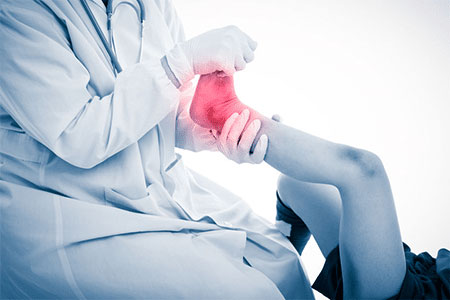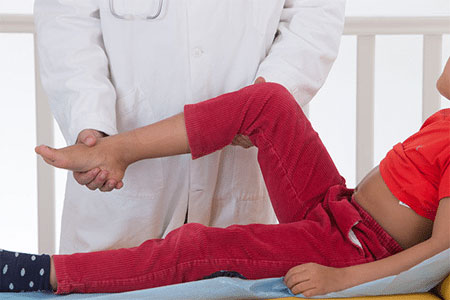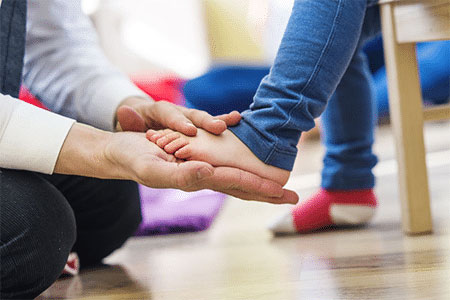The 6 Most Important Kids’ Shoe Facts – Learn How to Keep Your Kids’ Feet Healthy!
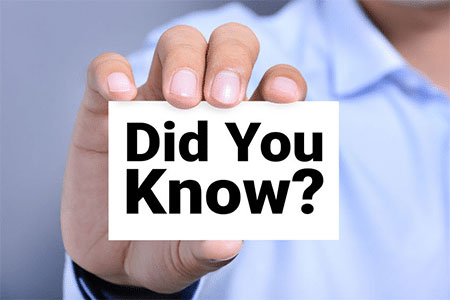
Some of the most common children’s foot conditions such as flat feet, overpronation, low muscle tone, or rolled ankles can be treated with the correct pair of shoes and in certain cases orthotics as well.
My approach when it comes to treating children’s foot conditions is very different from the one that most medical professionals recommend. I always recommend parents to be proactive and don’t take the “wait and see approach” when it comes to treating their children’s foot conditions, since this can lead to the condition worsening over time.
Based on my 10 years of experience, I have put together the 6 most important kids’ shoe facts that will help you keep your kids’ feet healthy.
The 6 Most Important Kids’ Shoe Facts
1st Fact: Supportive shoes are better than minimalist shoes.
The debate of whether children should wear supportive or minimalist shoes goes back many years, and both sides of the debate have valid points and studies to support their claims. I can tell you from my own experience what has worked for thousands of children who I have evaluated before.
Let me start by saying that children place an enormous amount of stress on their feet and legs, and their feet endure three times more stress than the average adult foot.
Shoes that are too soft don’t provide the correct amount of support to attenuate the impact that a child’s feet take when they come in contact with the ground, and this can lead to your child developing foot and leg pain. On the other hand, shoes that are too rigid or too stiff prevent the child to strengthen the foot muscles on their own.
I believe that children need to wear shoes that provide a combination of the correct amount of support and flexibility. Children who have healthy feet can definitely wear minimalist shoes, as long as they don’t experience any foot or leg pain. However, children with foot conditions must wear shoes that are more substantial and supportive.

2nd Fact: Most foot problems in adulthood are a result of unsupportive or ill-fitting shoes during childhood.
The feet are the foundation of our entire body. If your child has a foot imbalance, your child’s pelvis and spine will suffer as your child keeps getting older. Shoes that don’t provide the correct amount of support or that are the wrong size put the child at risk for developing injuries or foot problems later in life.
Investing in a pair of supportive shoes and making sure that the shoes are fitting the shape of your child’s feet correctly is a good and smart investment.
3rd Fact: Shoes with extra depth and rounder toe-boxes help keep kids’ feet healthy.
There is a large number of children who have wide or extra wide feet. Most parents believe that a shoe that is labeled as wide or extra wide will automatically fit the shape of a child with wide feet. There are two key features that your kids’ shoes need to provide to fit the shape of their wide feet:
1️⃣ Extra Depth: This feature allows the child’s feet to fit deeply inside the shoes and prevents the top part of the feet and the toes from rubbing against the top part of the shoes.
2️⃣ Rounder toe-boxes: This feature prevents the toes from rubbing against one another or the side of the shoes.
4th Fact: Breathable shoes help prevent foot issues for children with sweaty feet.
Children’s feet sweat 2 to 3 more times than the average adult foot. This is one of the main reasons why children wear down their shoes faster than expected. Sweat doesn’t only affect the durability of the shoe, but it also puts your child in danger of developing a foot condition such as foot fungus and infections.
Breathable shoes allow the moisture and heat of the child’s foot to escape and allow airflow in. It’s important for the shoes to also be machine washable, to kill any remaining bacteria inside the shoes.
Keep in mind that the shoes and the socks work together in preventing the child’s feet from sweating excessively.
5th Fact: Wearing the wrong shoe size is the cause of most foot problems.
I am always emphasizing to parents how it doesn’t matter how many features a particular shoe provides, if the shoes are not fitted properly, the child won’t get any of the benefits that the shoes have to offer.
You need to consider your child’s foot length as well as your child’s foot width. The instep of the foot also affects the final shoe size.
I created a virtual shoe fitting service that will help you retrieve your child’s shoe size from home. In that article I help parents determine their child’s exact foot size and whether the child has narrow, medium, wide, or extra wide feet. I also will be able to tell you whether your child has a high instep or not.
6th Fact: The instep of your child’s feet limits what shoes your child can wear.
The instep is the top part of the foot, and when it’s high, it makes it complicated to find shoes that fit. Take a look at the picture below to visualize where the instep of the foot is located:
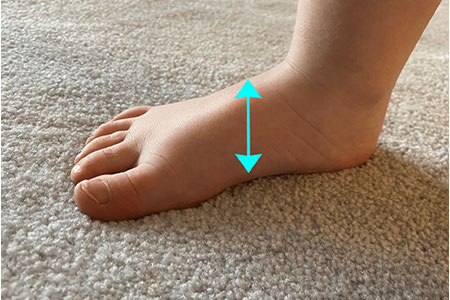
Certain shoes provide extra depth and allow the child’s feet to fit deeply inside the shoes.
These are the 6 most important kids’ shoe facts that you need to know to provide your child with the correct pair of shoes and socks and help keep your child’s feet healthy.
Get in Touch for a Personalized Suggestion
Without a doubt, children’s shoe needs can vary depending on their age, activity level, and any specific foot conditions they may have. If you have any questions or need any further assistance, you can also contact me via email and I will get back to you as soon as possible. I am happy to help you find a different pair of shoes for your child so don’t hesitate to reach out if you have any questions.
If you send me pictures of your child’s feet barefoot and standing on a flat surface I would be able to evaluate your child’s feet and also tell you what foot shape your child has.

